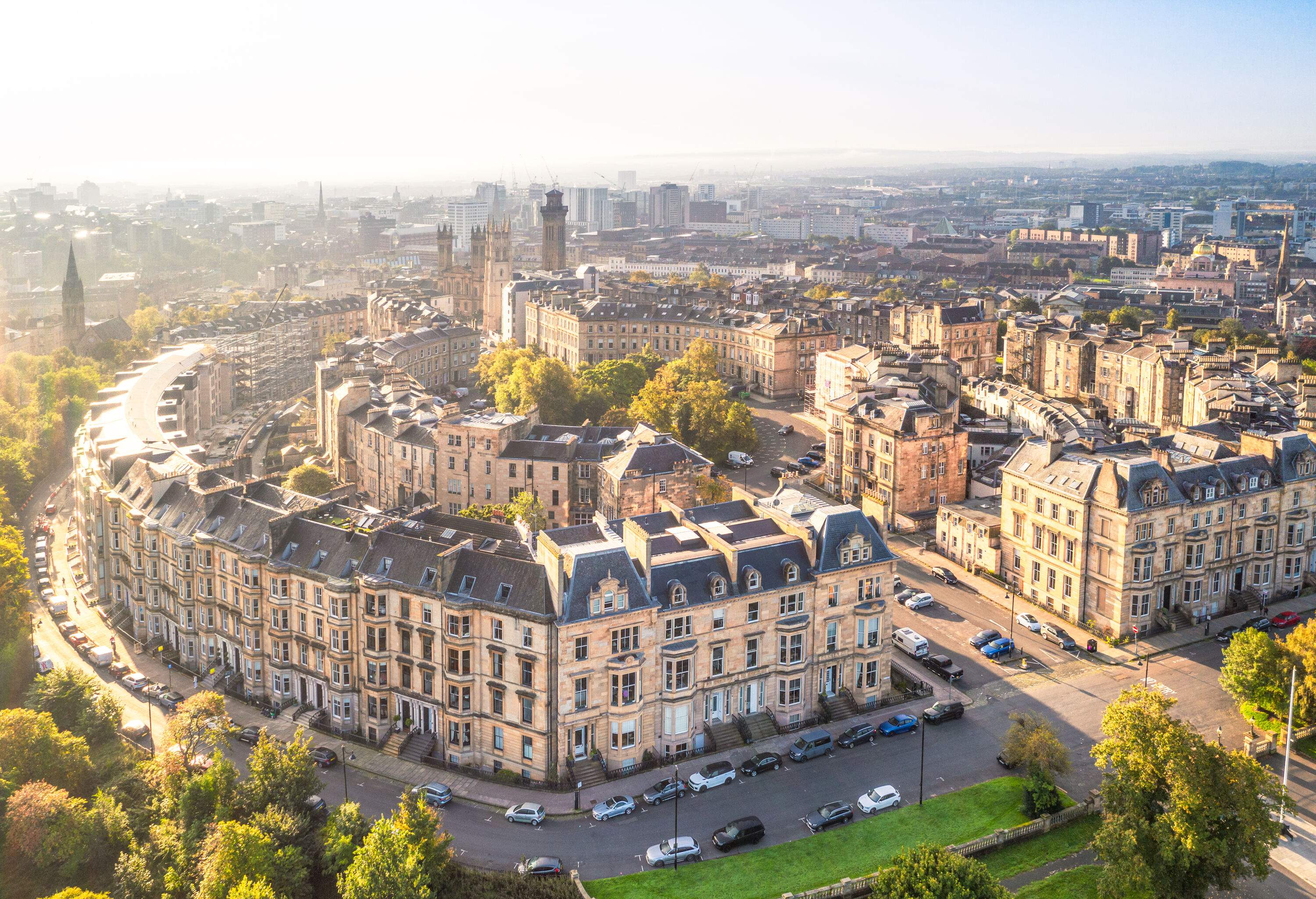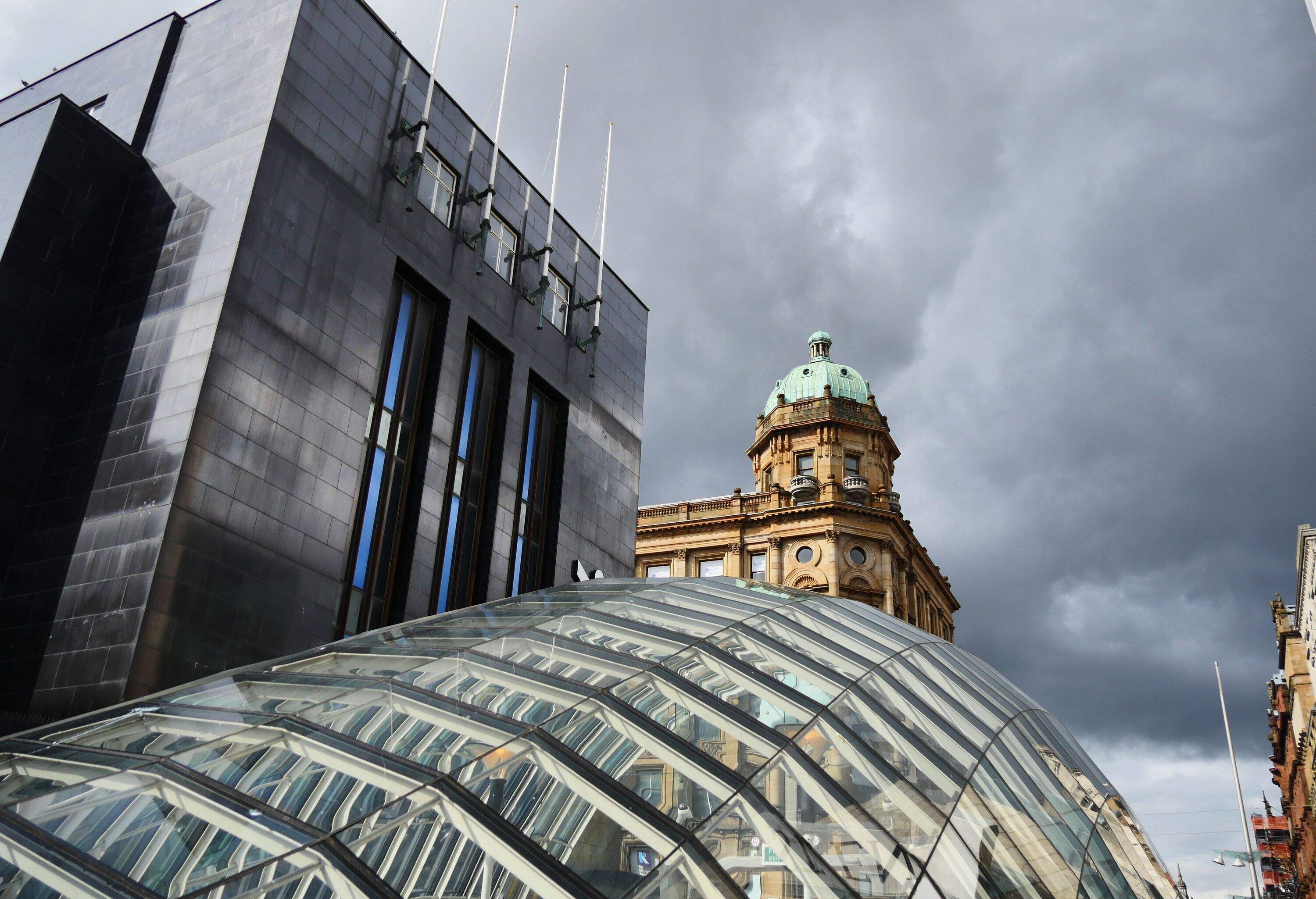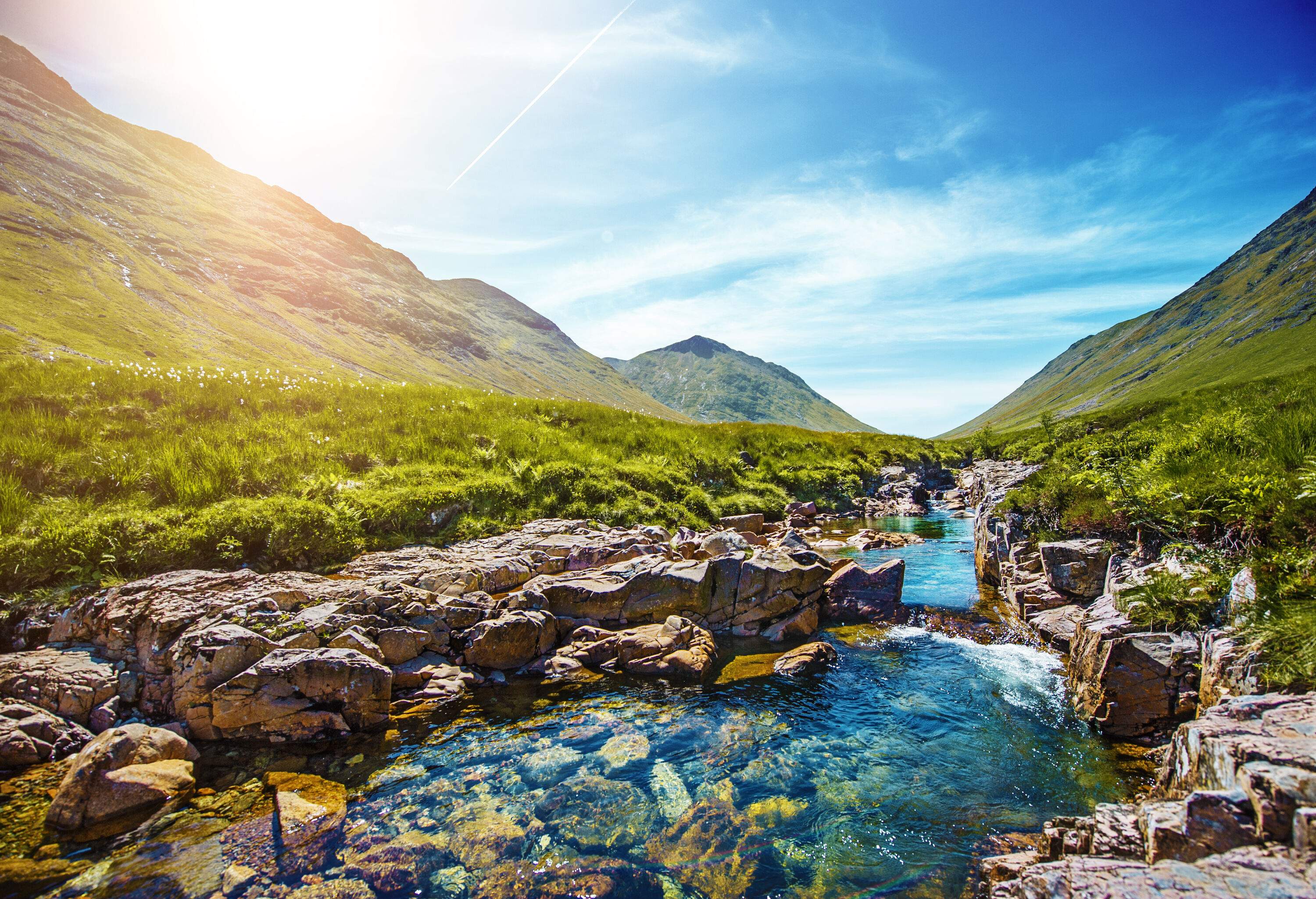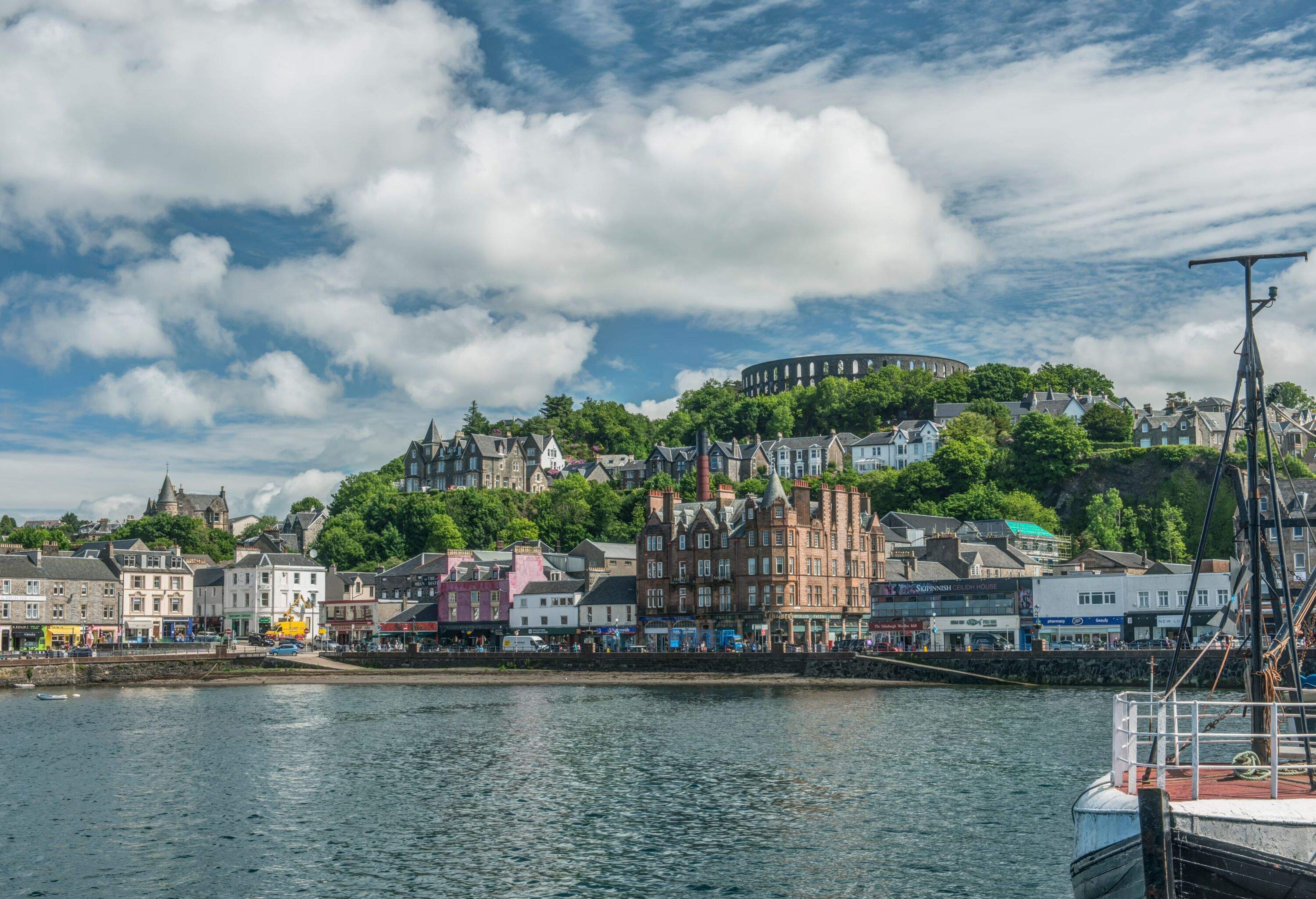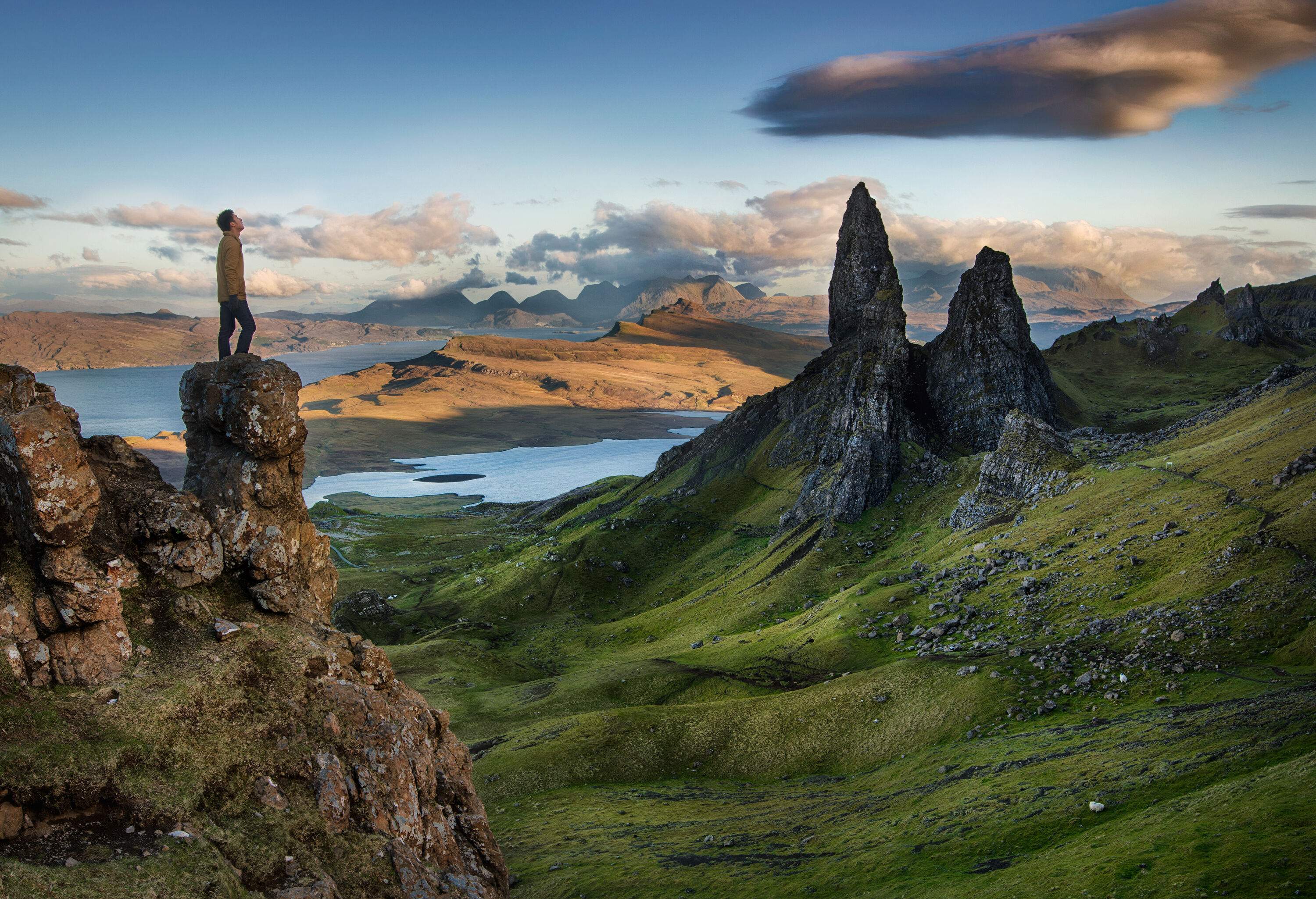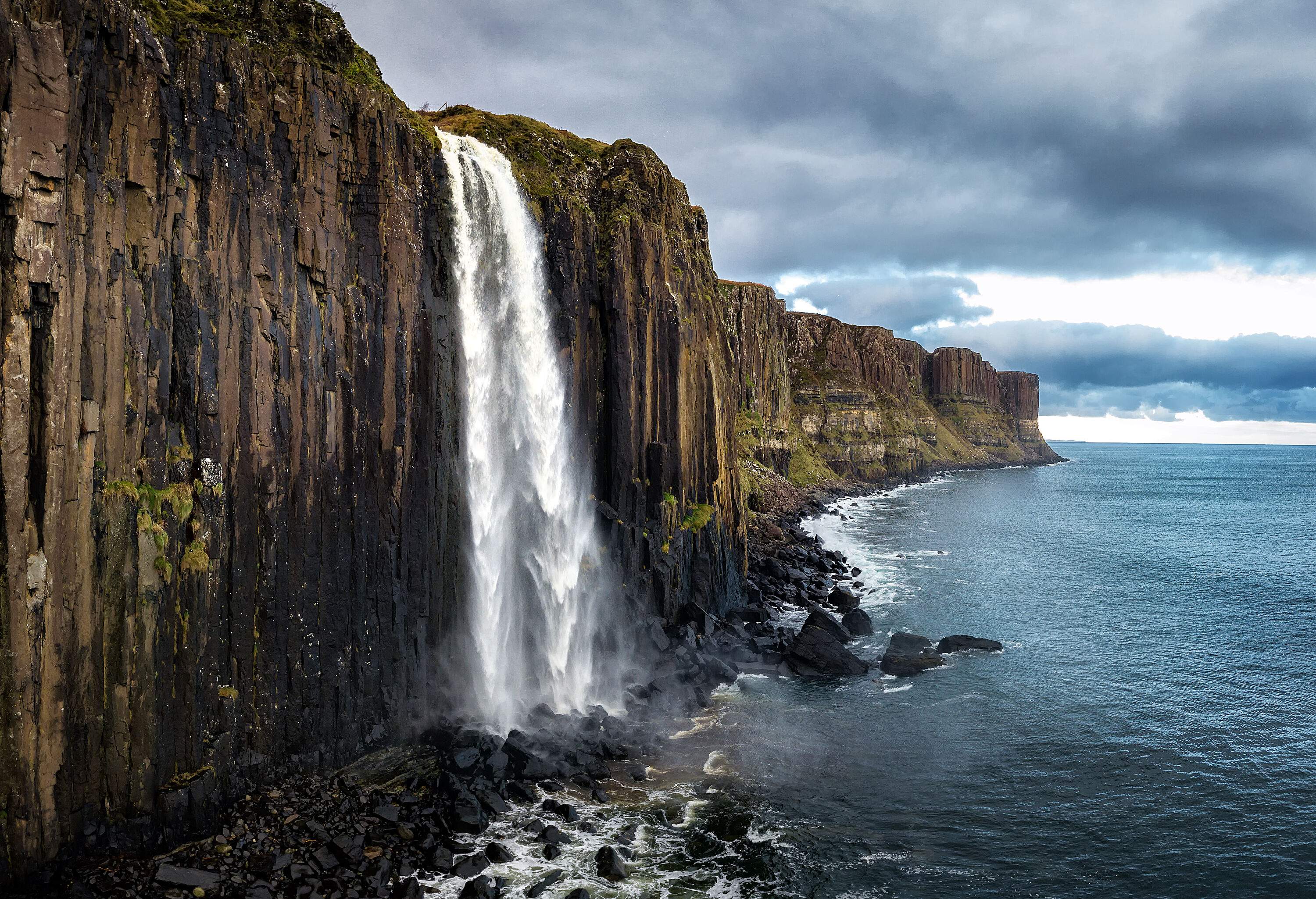Join us on an unforgettable Scotland road trip adventure through the rugged landscapes, ancient castles, and vibrant culture. From the drama of the Highlands to the beauty of the West Coast, this Scottish journey promises to be filled with stunning scenery, fascinating history, and plenty of surprises along the way.
How to get to Scotland?
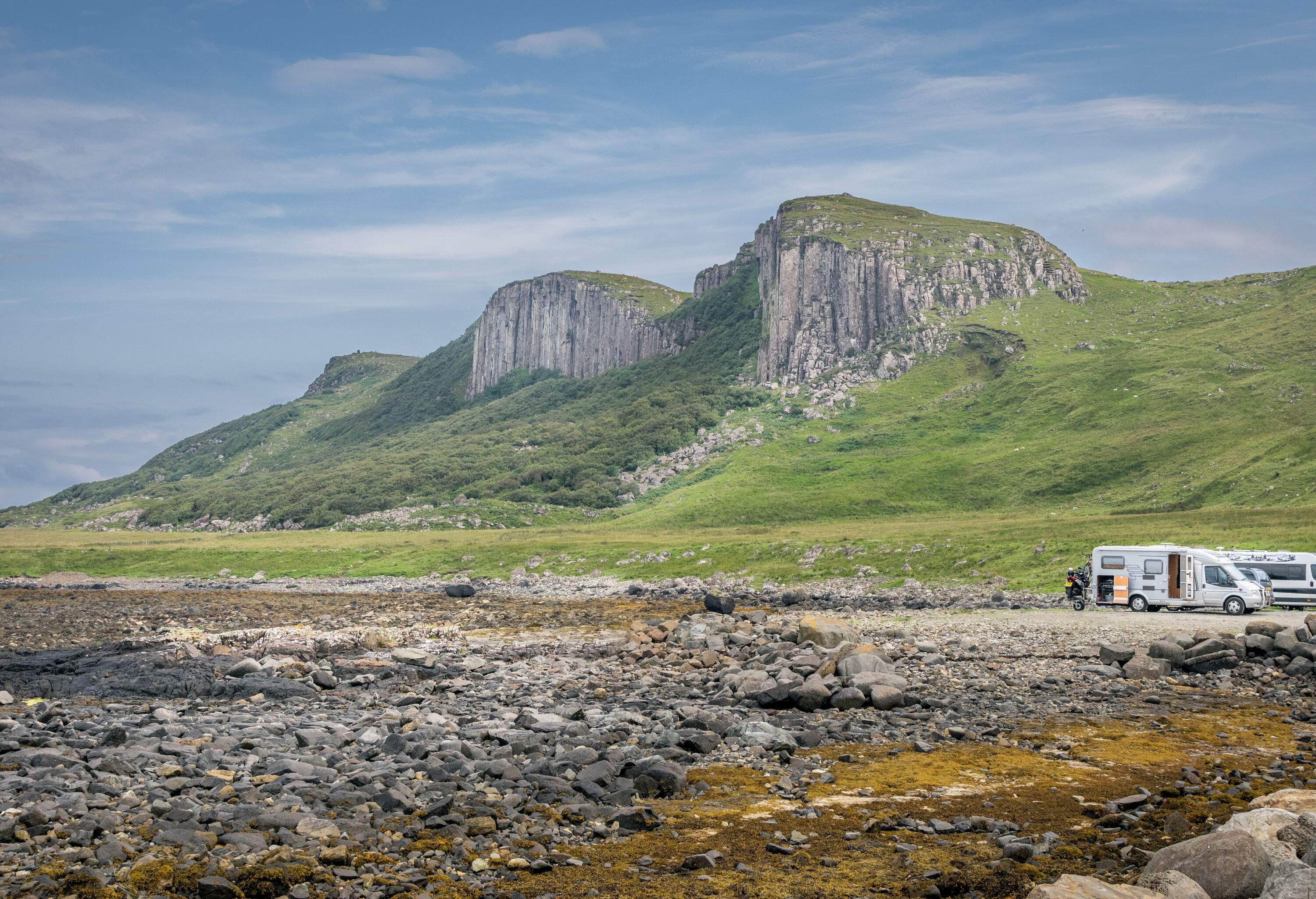
If you are coming from the U.S. there are a few cities you can fly from to catch a direct flight to Edinburgh. Roundtrip flights from NYC to Edinburgh cost on average $967.
To get to the starting points of our Scotland road trips, Inverness or Glasgow, you will need to catch a train, or a domestic flight, once you have arrived. Alternatively, you can get your rental car for your road trip at the airport and start your drive from there.
The same goes for your return; once your vacation is over you will either need to take a train, or a bus, from Inverness to Edinburgh to catch your international flight home or add one more scenic drive to the airport.
If you are already starting your road trip in Europe you might be able to catch a direct flight to Inverness or Glasgow.
Suitable cars for your road trip in Scotland

What rental car type you pick will depend on the route, the season, and how many people are traveling. Obviously, you want to make sure to have enough space for everyone and your luggage and also choose a gas-efficient car. An inbuilt GPS and air conditioning (yes, even in Scotland!) are also good options to pick.
For most regions, you won’t need an all-wheel drive but do check the weather report before you set off. Usually, a regular-sized car or a compact SUV is more than enough. Ultimately, book a rental car that suits your budget and comfort preferences. And don’t forget comprehensive rental car insurance for ease of mind!
Remember: Scotland drives on the left hand side of the road! It can be a good idea to choose an automatic car to make your time driving a little easier.
Best time to take a Scottish road trip
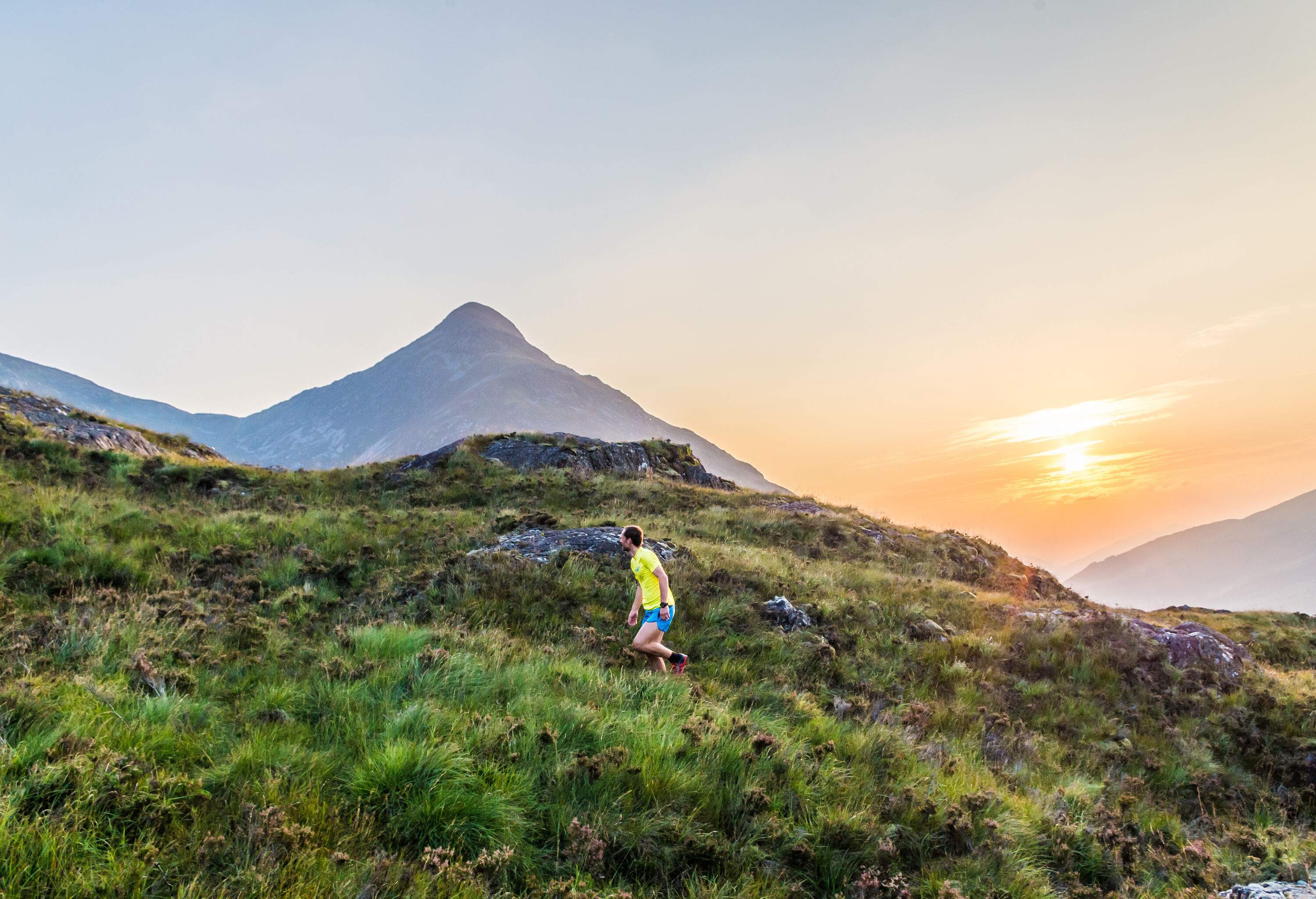
As Brits who have traveled widely across Scotland, we know the best time for a road trip in Scotland is in May and June or in September and early October.
In spring and early summer, the landscape is alive with vibrant colors as flowers bloom and trees come back to life. The weather is generally mild, with longer daylight hours for exploring and the roads have less tourist traffic. You’ll also avoid the infamous Scottish midge which is at its peak in July and August.
In autumn, foliage paints the landscape in stunning shades of red, orange, and gold. The summer crowds have dispersed, allowing for a more peaceful road trip experience, yet the weather remains fairly mild.
Keep in mind that Scottish weather can be unpredictable, especially near coasts and mountains, so it’s always a good idea to be prepared for rain when you pack!
Estimate your road trip budget
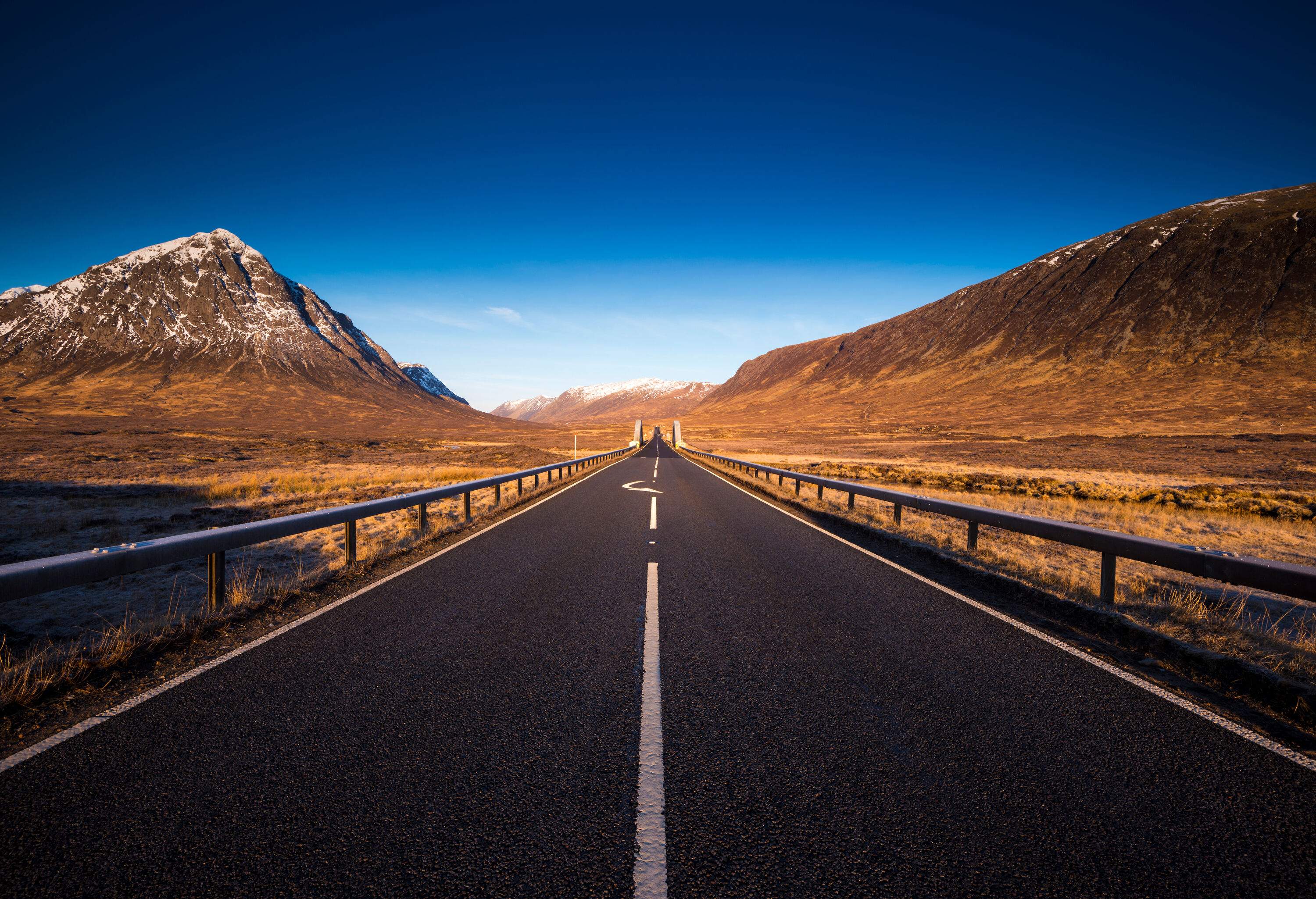
Before finalizing your plans, it’s helpful to know how much road-tripping in Scotland will cost. Here are some costs, based on comparisons from hundreds of travel providers to help you work out your budget:
- Average price for one night in a mid-range double hotel room in Edinburgh: £190 (approx. $240)
- Average price for one night in a hostel in Edinburgh: £96 (approx. $122)
- Average daily rate for a rental car in Edinburgh: £74 (approx. $94)
- Average cost of 1 liter of gas: £1.50* (approx. $1.90) and you’ll need about 17 liters to cover 100 miles
*Price estimate is taken from numbeo.com in May 2024
Based on a five-night road trip in Scotland, we would expect the costs to range from around £900 to £1400 per person (approx. $1144 to $1780), depending on your hotel and meal choices.
Road trip in Scotland: 5 days on the 500
Day 1: Inverness (one night)
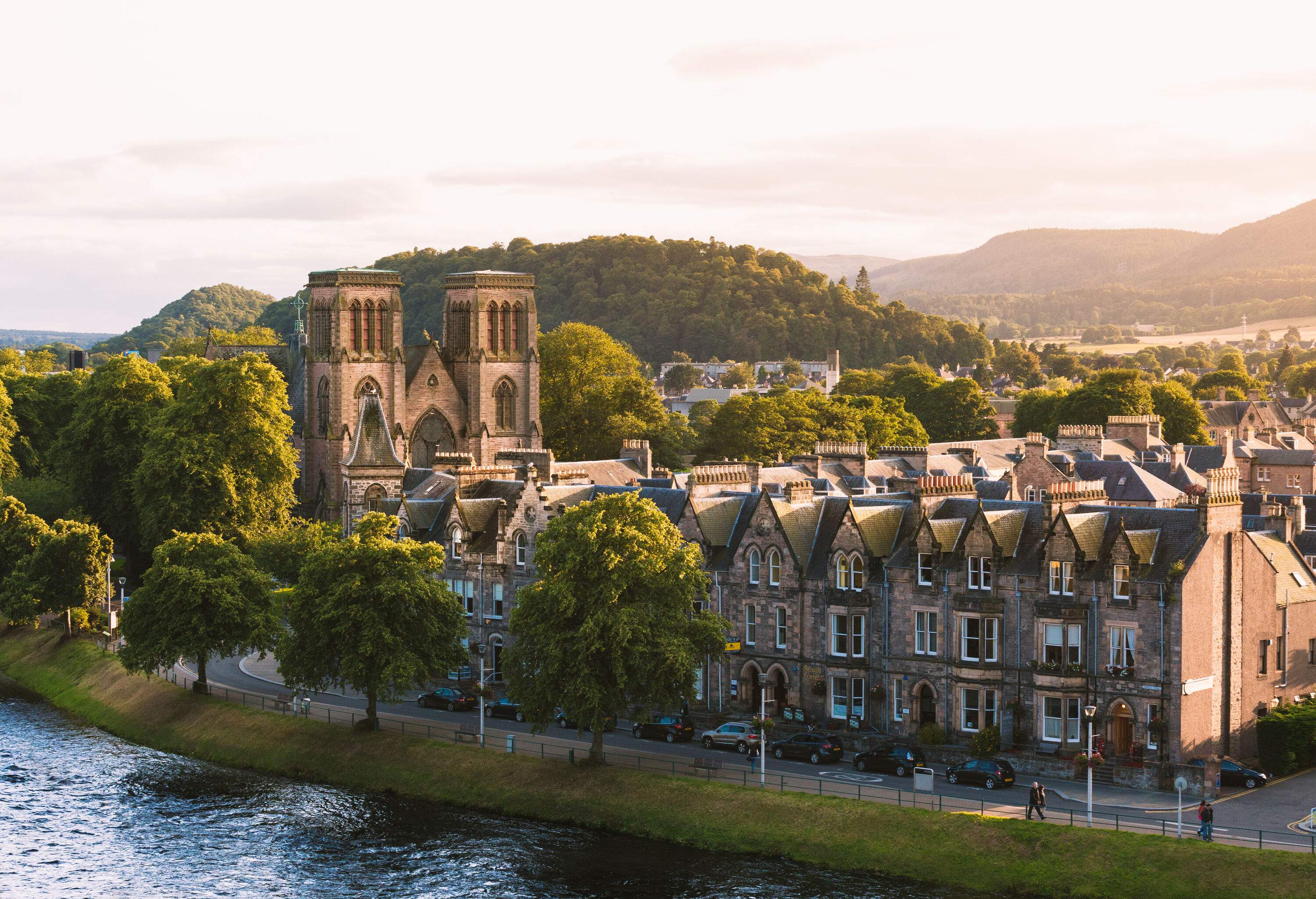
Inverness, located on the picturesque banks of the River Ness, is the start and finish point of your North Coast 500 journey. Dominated by a fabulous castle, Inverness is a thriving city, well worth a wander.
All visitors to Inverness should embrace the age-old tradition of searching for the legendary Loch Ness monster. You can opt for a cruise or hire a boat to spot the Loch Ness monster. While you may not catch a glimpse of Nessie, you’ll be treated to breathtaking scenery, fresh air, and a great start to your NC500 adventure!
Other things to do here include visiting the nearby Culloden Battlefield, the site of the final confrontation of the Jacobite rising, where Charles Stuart’s army was defeated in 1745; hiking to Craig Phadrig, historically the stronghold of ancient Pictish kings.
Where to stay in Inverness: Kingsmills Hotel is well-located and has excellent reviews.
Day 2: John o’Groats (one night)
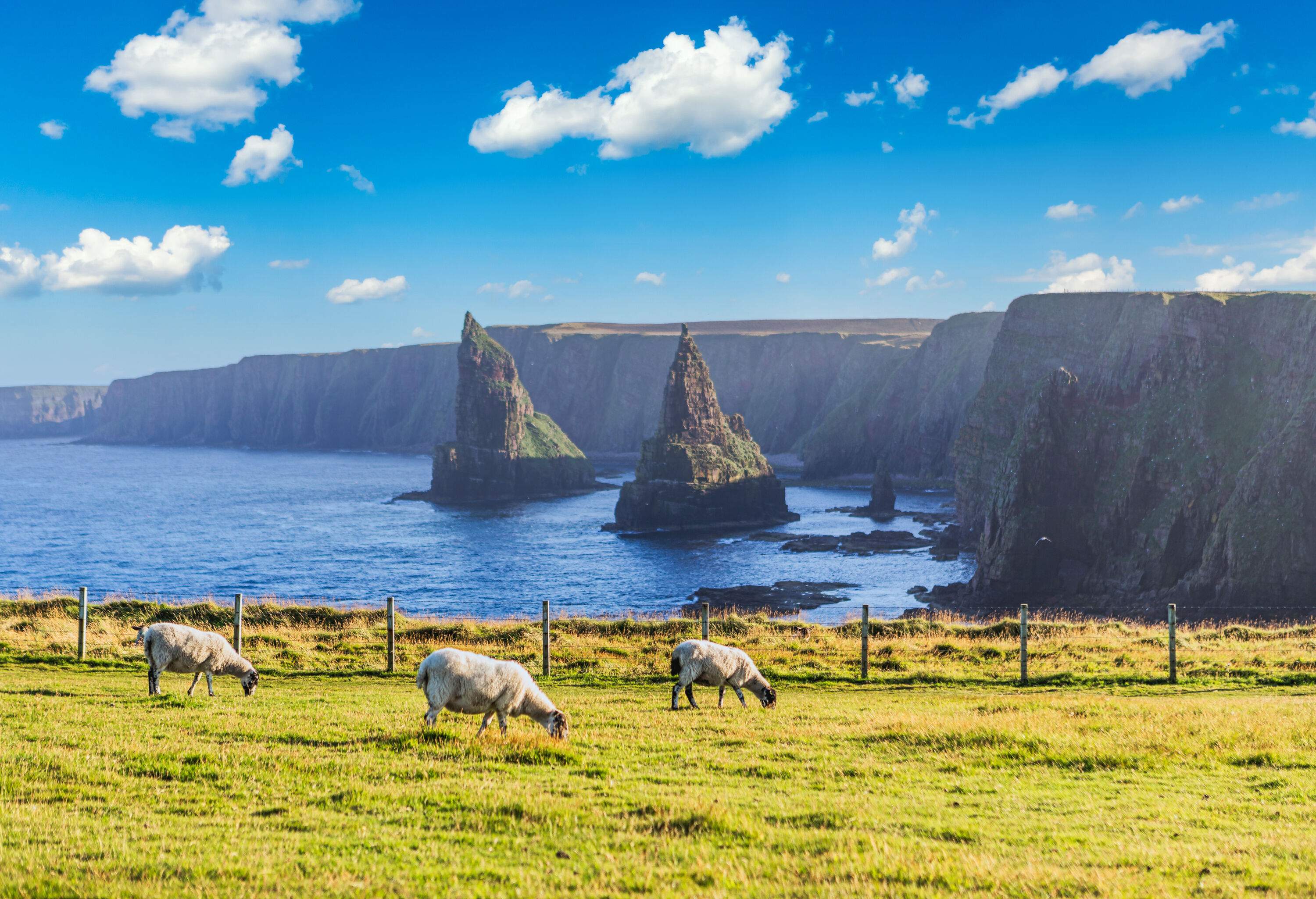
Distance from Inverness: 120 miles – 3 hours
As you travel through the region of Easter Ross to John o’Groats, stop to explore Black Rock Gorge, a dramatic mile-long Ice Age gorge that served as a filming location for a well-known wizarding film.
John o’Groats is a pretty village in a dramatic landscape at Scotland’s northeastern tip. To get to the tip itself, you need to hike 2 miles from John O’ Groats to Duncansby Head Lighthouse. To see the two dramatic 6,000-year-old Duncansby Sea Stacks, continue south along the coastal path for another mile.
If that’s too far, the iconic and much-photographed John O’Groats signpost is a ten-minute walk north from the village, and a picture there makes a memorable souvenir from your trip.
Where to stay in John o’Groats: Seaview Hotel is right in the village and has amazing views.
Day 3 & 4: Tongue (two nights)
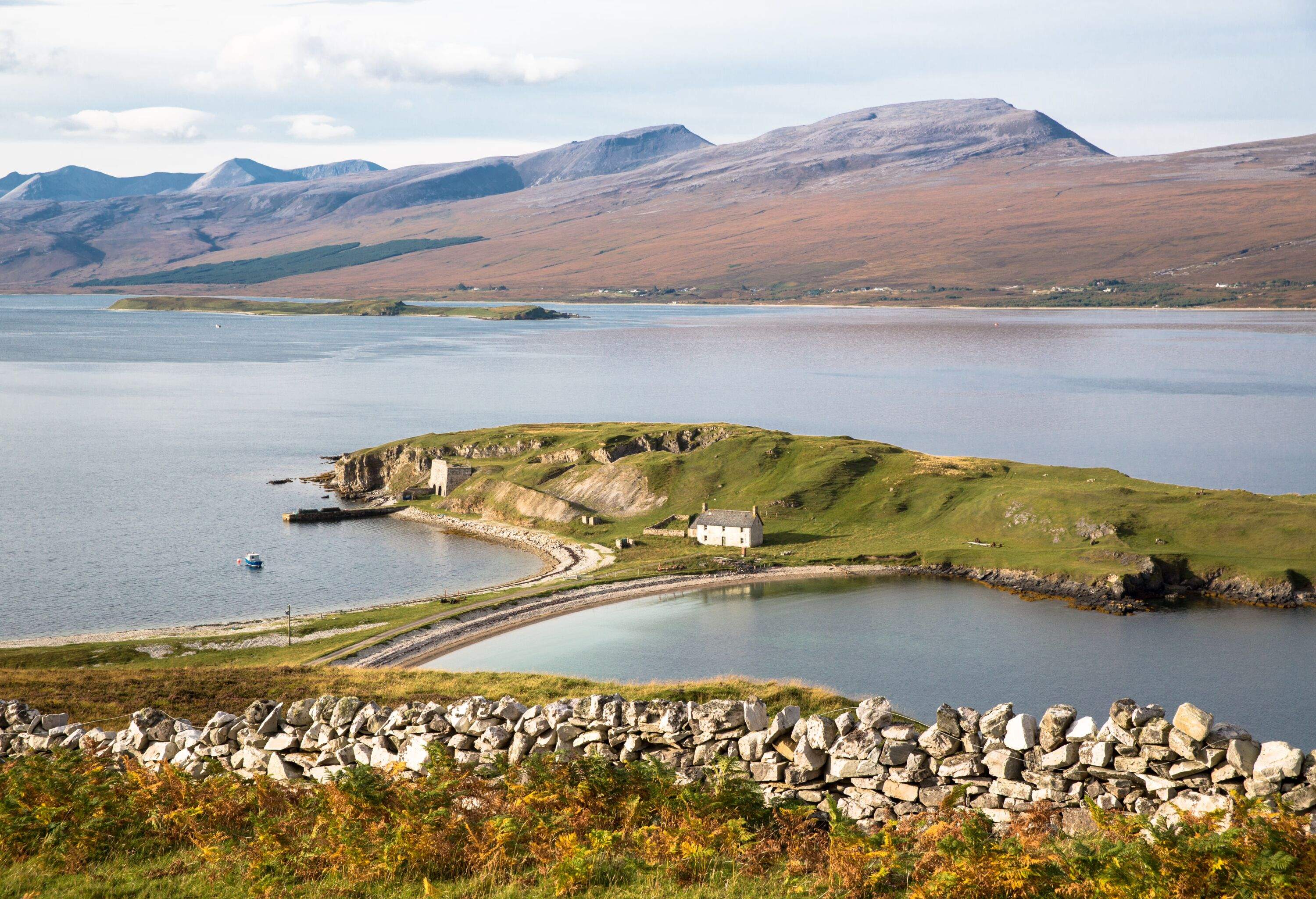
Distance from John o’Groats: 62 miles – 1.5 hours
As you head west along Scotland’s north coast, stop to visit the Castle of Mey. Restored by the late Queen Mother, the castle offers a rare glimpse into the history of the British royal family, who used the castle as a holiday home.
A little further on is the spectacular Melvich Beach, blessed with golden sand and turquoise waters. It’s a picturesque place for a leisurely walk or spot for beachcombing, and if you’re lucky you might even spot dolphins playing in the surf.
Make a stop in the quaint village of Bettyhill and explore the fascinating Strathnaver Museum. Located just a short walk from the white sandy beach at Farr Bay, the museum offers an insightful journey through Highland culture and life.
Tongue makes a great base for a couple of nights, allowing you to explore further west into Sutherland before you head south.
Highlights in the area include the many pristine and often deserted beaches; Smoo Cave, which has one of the tallest entrances to any sea cave in Britain at 50 feet high and is complete with its own waterfall; and Balnakeil Craft Village, where you’ll find local artists creating glass work, ceramics, woodwork, paintings and prints, and other unique crafts which make perfect souvenirs of your trip.
Where to stay in Tongue: The Tongue Hotel is a traditional Scottish hotel in the heart of the village.
Day 5: Lairg (one night)
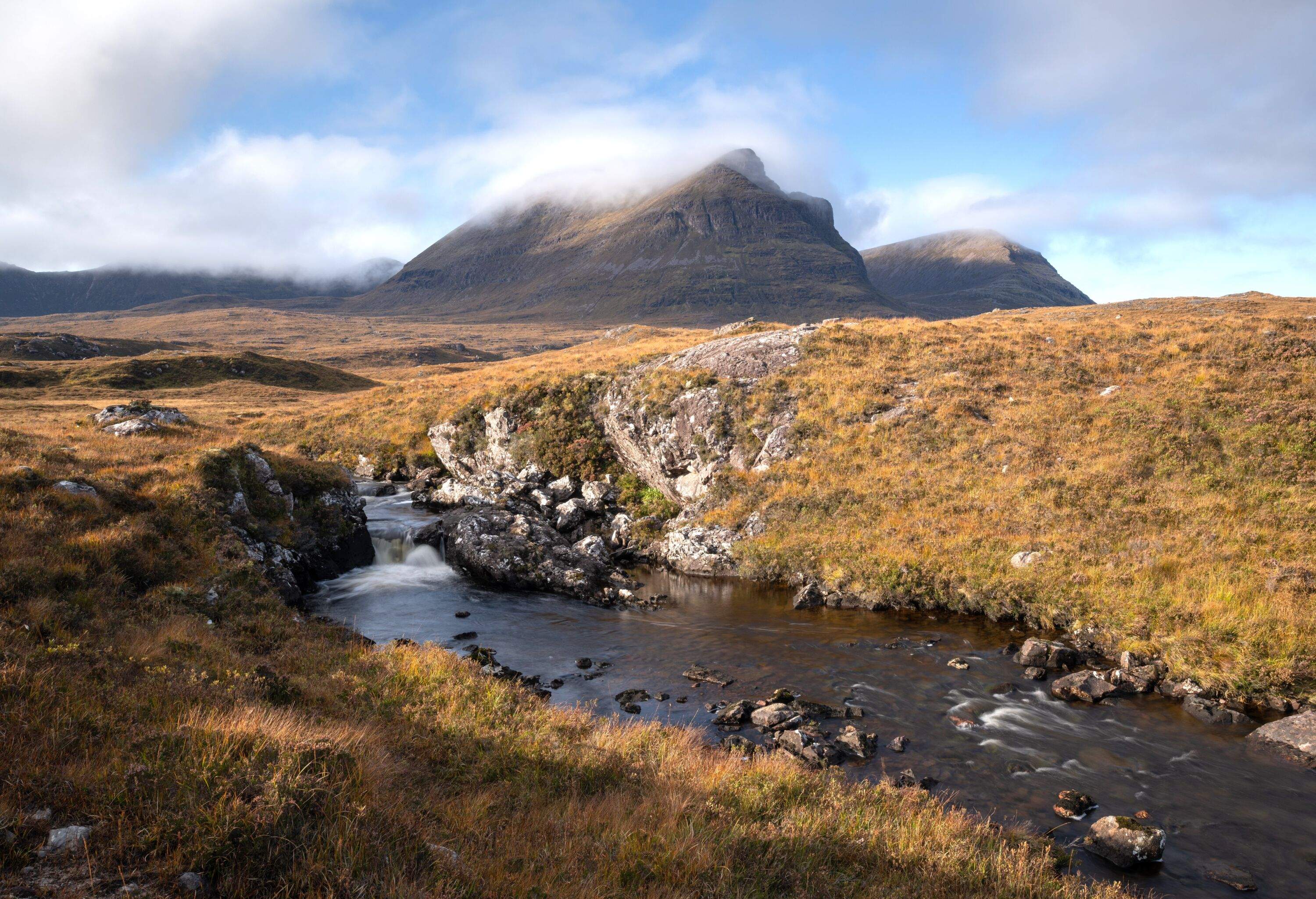
Distance from Tongue: 38 miles – 1 hour
Deep in the wilderness of the Scottish Highlands, Lairg, known as the crossroads of the north, is set amongst a patchwork of moorlands, forests, and crofts on Loch Shin.
The road to Lairg from Tongue is single track with passing places and winds its way through some of Scotland’s most remote landscapes, dotted with lochs and the ever-present mountains.
People visit Lairg for excellent hiking and to witness the magnificent Atlantic salmon leaping up the waterfalls at the Falls of Shin, located less than 5 miles from Lairg. From April to October, these incredible fish journey upstream to spawn, with the best chances of spotting them jumping in the later months.
Where to stay in Lairg: Invershin Hotel Bunkhouse and Bar offers cozy rooms and traditional Scottish hospitality.
Day 6: Inverness
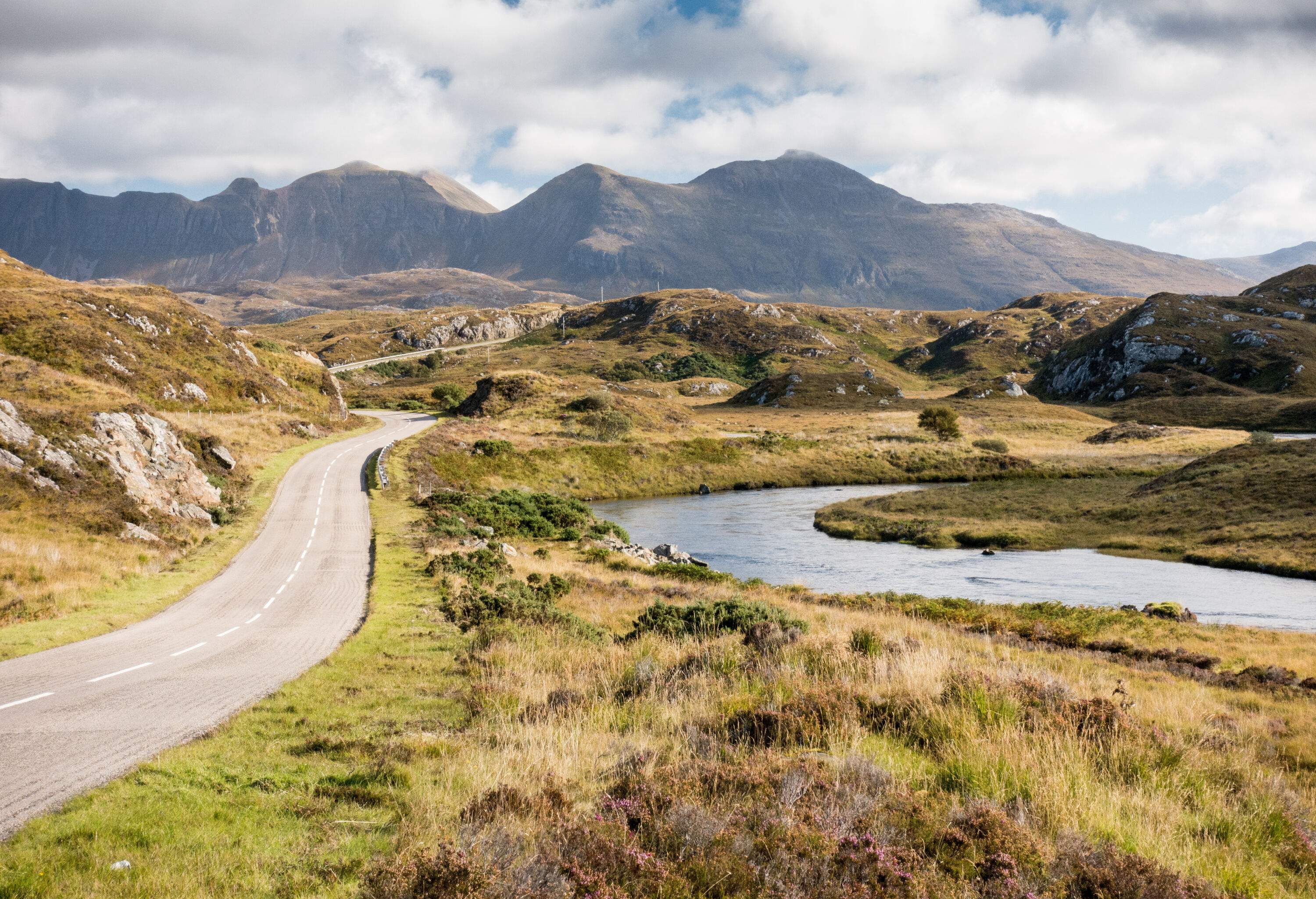
Distance from Lairg: 49 miles – a good hour
On your drive back to Inverness, stop at and walk up to the huge Fyrish Monument for panoramic views across Cromarty Firth.
The monument, commissioned in 1782 by Sir Hector Munro, a British Army general who served in India, was built to employ local workers during the Highland Clearances and has much historical significance as well as being a popular hiking destination.
Scotland road trip: the ultimate 2 week itinerary
Days 1 & 2: Glasgow (two nights)
Glasgow is a city bursting with culture, history, and vibrant energy. Its stunning Victorian and Art-Deco architecture, and landmarks like the medieval Glasgow Cathedral and George Square, lined with elegant buildings, add to its unique charm.
The city’s cultural scene is thriving, with numerous museums, galleries, and theaters to explore. From the Kelvingrove Art Gallery and Museum and the Gallery of Modern Art to the award-winning Riverside Transport Museum, there’s plenty to see and do.
Glasgow also has a lively music scene and many of the city’s restaurants, cafés, and bars offer live music sessions. Why not sample the delicious food and drink of Scotland whilst tapping your foot to some great tunes?
Where to stay in Glasgow: Motel One is in a great location and has dedicated parking.
Day 3: Loch Lomond (one night)
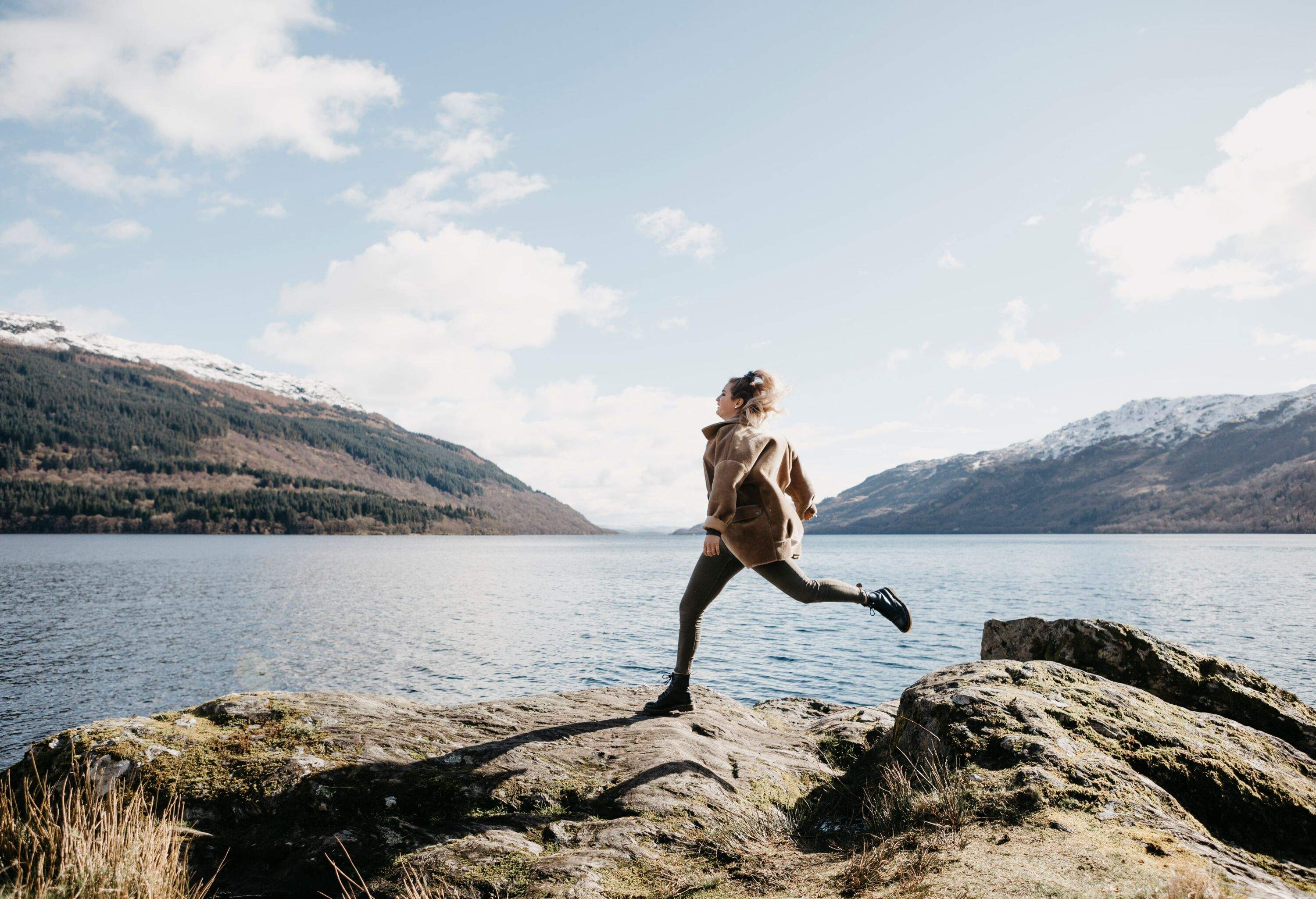
Distance from Glasgow: 35 miles – less than 1 hour
Loch Lomond, the largest freshwater lake in Great Britain is renowned for its breathtaking natural beauty, surrounded by picturesque hills and mountains.
On route from Glasgow, stop at the most southerly point of Loch Lomond, Balloch Pier, where you’ll find the paddle steamer, Maid of the Loch, a magnificent example of a Clyde-built ship with a stunning Art-Deco-inspired interior.
From Balloch Pier, drive north to the charming village of Luss on the western shore, where you can try cycling, fishing, and water sports such as kayaking and sailing, or take a boat cruise.
The area is rich in wildlife, with opportunities to spot red deer, otters, and various bird species.
A walk out to the end of the small pier to admire Ben Lomond, the most southerly of the Munros (a Scottish mountain with an elevation of more than 914 meters) is obligatory!
Where to stay in Luss: The Loch Lomond Arms Hotel is a 4-star hotel in Luss with traditional Scottish decor.
Day 4: Inveraray (one night)
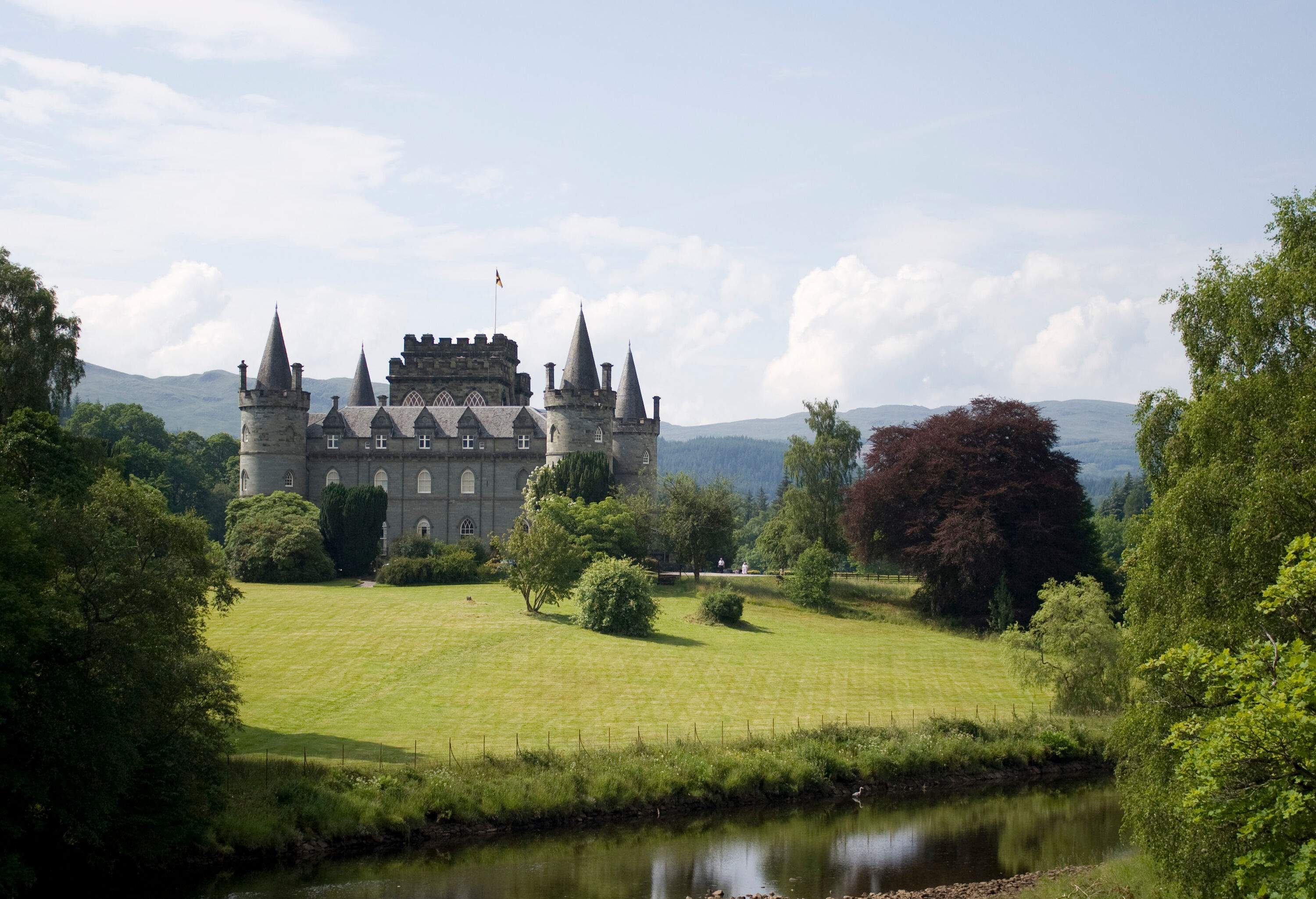
Distance from Luss: 31 miles – 45 minutes
Inveraray is a picturesque town on the western shore of Loch Fyne. Known for its stunning views and well-preserved Georgian architecture, elegant buildings line its quaint streets.
The iconic Inveraray Castle, the ancestral home of the Duke of Argyll and Chief of Clan Campbell, is an excellent example of Scottish baronial architecture.
Inveraray is also home to the historic Inveraray Jail, a living museum, and former prison dating back to the 19th century. You can explore the jail, gaining insight into Scotland’s criminal past and experiencing life as a Victorian prisoner.
Where to stay in Inveraray: The Inveraray Inn is a heritage hotel overlooking Loch Fyne.
Days 5 & 6: Glen Coe (two nights)
Distance from Inveraray: 93 miles – 2.5 hours
Today is all about the drive, and we’re taking the scenic route! Set your sat nav to pick up the A83 heading south before driving north along the beautiful coastline of the Argyll and Bute region.
Stop at Auchindrain to learn about the Highland’s darkest hours. Scotland’s last inhabited Highland farming township before the Highland Clearances, which took place between 1750 and 1860, is beautiful and thought-provoking.
Other places to stop on today’s route include: Kilmartin Glen to see the 800 cairns and monuments that dot the Glen and the remains of Dunadd Hill Fort, where the first kings of Scotland were crowned; Oban Distillery, one of the smallest and oldest distilleries in Scotland; and the much-photographed Castle Stalker.
Day five is one of exploration. Shaped by glaciers and fiery volcanic explosions millions of years ago, Glen Coe is a landscape full of natural wonders and the Glen Coe Geotrail shares the ancient volcanic history of this naturally beautiful place.
Don’t miss visiting the pretty village of Glencoe where you can find out about local history, including the 1692 Massacre of Glencoe, when members of the Campbell clan murdered members of the MacDonald clan on the orders of the English Crown.
Where to stay in Glen Coe: The Clachaig Inn is in a great location and enjoys good reviews.
Day 7 & 8: Glenfinnan (two nights)
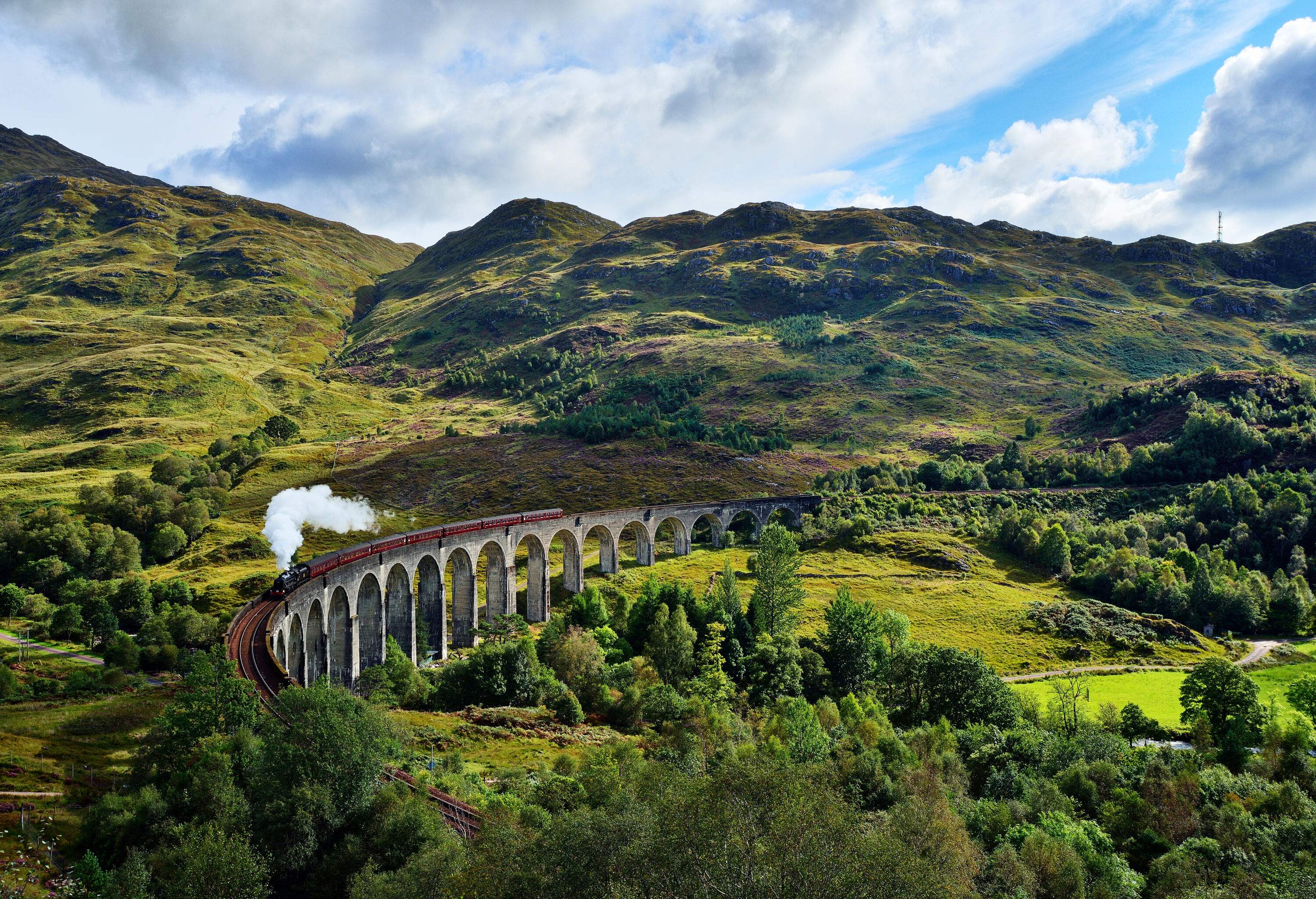
Distance from Glen Coe: 33 miles – less than 1 hour
As you leave Glen Coe, the big mountains beckon. From the market town of Fort William, you are officially in the Scottish Highlands.
Make a stop at Banavie and visit the fantastic Neptune’s Staircase, the longest staircase lock flight in Scotland. This flight of eight locks on the Caledonian Canal is an amazing feat of engineering that raises the canal by 62 feet over 1/4 mile. It takes around 90 minutes for a boat to travel the locks.
This is the perfect spot to practice your ‘gongoozling’, the activity of watching boats and activities on canals for pleasure!
The wonderful Glenfinnan Viaduct spans the valley, providing a dramatic backdrop to the area. Famously featured in a popular series of wizarding films, the viaduct has been traversed by the Jacobite Steam Train since 1897, offering passengers spectacular views of Loch Shiel and surrounding mountains.
Glenfinnan is also the spot in which Bonnie Prince Charlie called for the local clansmen to assemble and denounce the throne of Great Britain. At the head of Loch Shiel stands the Glenfinnan Monument, erected in memory of the Jacobite Uprising of 1745.
Where to stay in Glenfinnan: Glenfinnan House Hotel is an award-winning lochside country house hotel splurge for a special occasion and stay in a Scottish castle!
Day 9, 10 & 11: Isle of Skye (three nights)
Distance from Glenfinnan: 73 miles – 2.5 hours (includes a ferry)
Today sees you crossing over the sea to Skye. Continue west on the A830, the historic Road to the Isles, one of the most beautiful roads to drive in Scotland, and so-called because it leads to Mallaig where ferries depart for the islands of Rum, Eigg, and Skye.
Make time to stop at Camusdarach Beach south of Mallaig, an enticing arc of white sand with the clear turquoise sea lapping its shores.
Once on Skye, base yourself in Portree, from where you can reach all the highlights of the island.
Our favorite things to do on Skye include:
- The 2.3-mile hike up to the Old Man of Storr on the Trotternish peninsula. This large spike of rock, created by an ancient landslide, stands high and can be seen for miles around, making it one of the most photographed places in Scotland.
- Visit Skye’s most famous historic building, Dunvegan Castle, the seat of the chief of Clan MacLeod. Situated at the edge of Loch Dunvegan, the castle gardens are a hidden oasis of beautiful plants.
- Try a spot of wild swimming in the bracing Fairy Pools. These beautiful crystal-clear pools and waterfalls are located at the foot of the Cuillin mountains.
- Stop off at the world-famous Talisker Distillery for a tour that finishes with a wee dram of their peaty single malt.
- Get out on the water in a canoe or take a boat trip to get acquainted with local wildlife. You’re likely to see seals, dolphins, porpoises, and lots of different species of seabirds.
Where to stay in Portree: The Tongadale Hotel is centrally located, the perfect spot to stay for exploring the island.
Day 12: Applecross (one night)
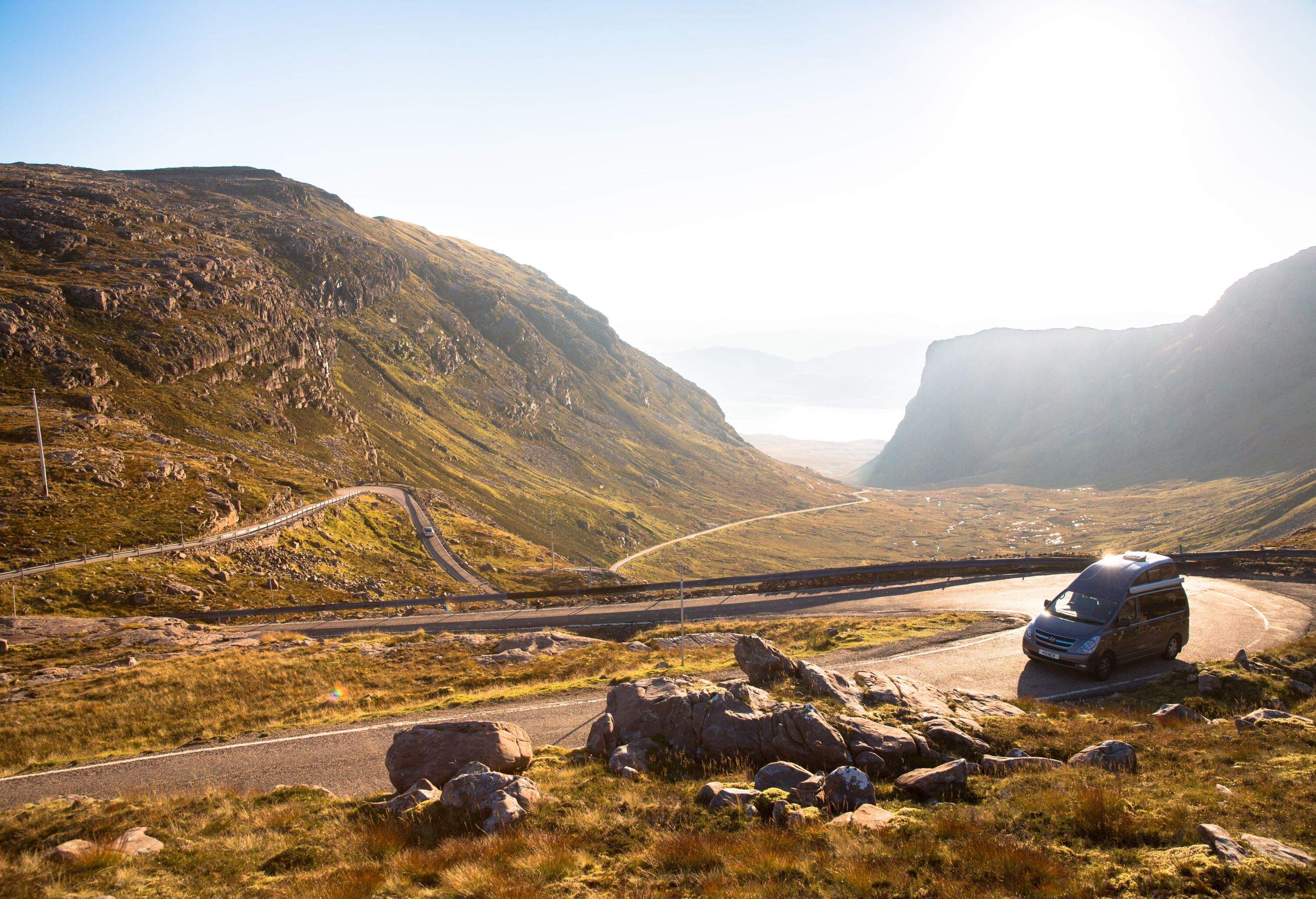
Distance from Portree: 75 miles – a good 2 hours
You’ll be leaving by the Skye Bridge across Loch Alsh to tackle the epic Applecross Pass. Also known as Bealach na Ba, this single-track road with passing places snakes through the raw and craggy landscape.
With its hairpin bends and steep gradients, this 11-mile stretch of road is not for the faint-hearted or novice drivers, but for everyone else, the stunning views and breathtaking experience are well worth it!
Home to just a few hundred people and with only two roads, Applecross Village is a peaceful place away from the hustle and bustle of modern life.
Day 13: Fort Augustus (one night)
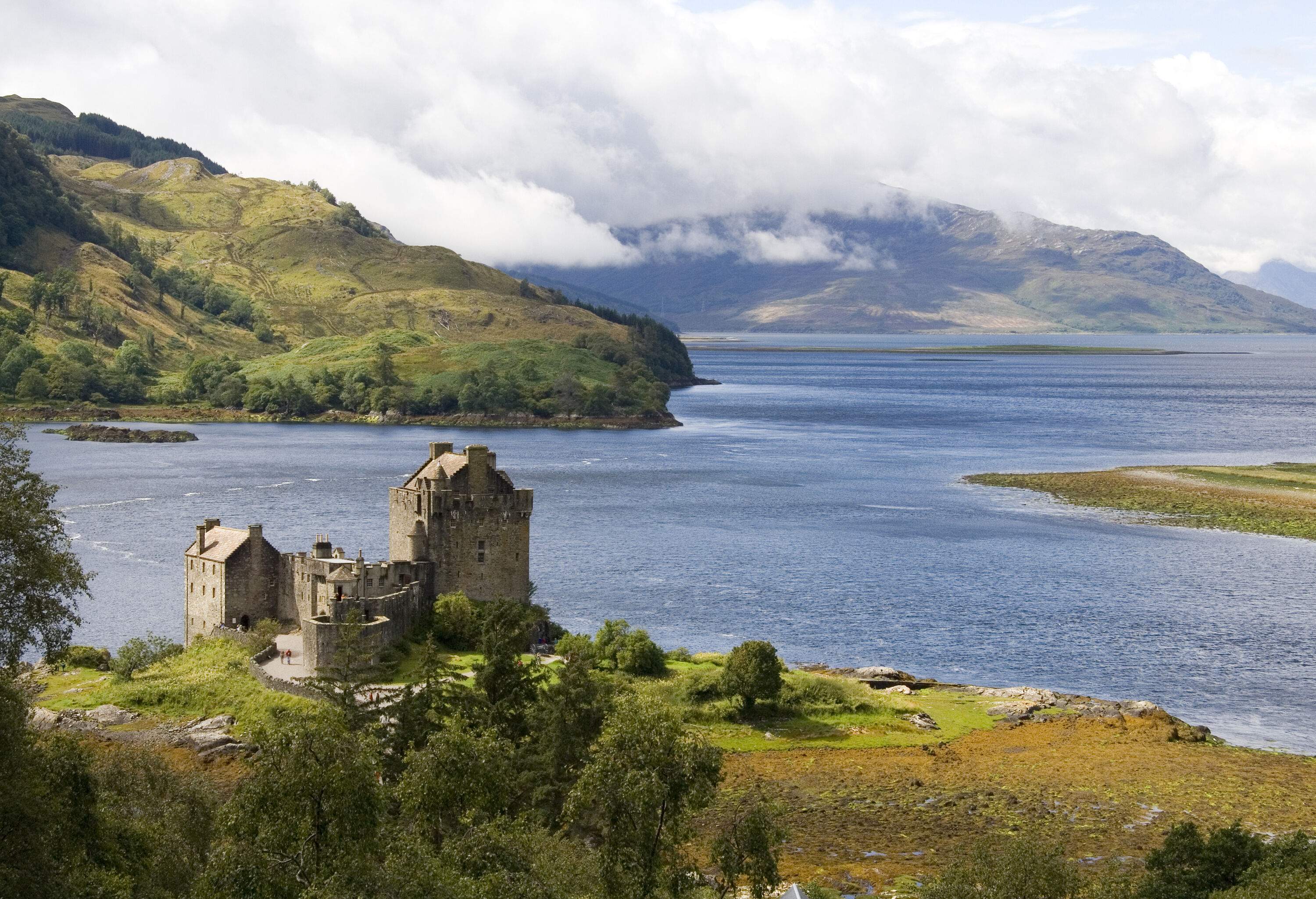
Distance from Applecross: 87 miles – a good 2 hours
Day 13 sees you head back over the Applecross Pass and through the Highlands before arriving at the very pretty village of Fort Augustus, the gateway to Loch Ness and the most southerly tip of this famous body of water.
Stop en route to see the award-winning Attadale Gardens, uniquely planted and a joy to explore, especially if the sun is shining!
A little further on is Eilean Donan Castle, one of the most photographed castles in the country. Located on an island where three sea lochs meet, the dramatic castle is surrounded by magnificent scenery and is full of history.
Fort Augustus is where the 60-mile-long Caledonian Canal leaves Loch Ness, cutting through the small village on its way south. Visit the Caledonian Canal Heritage Centre to learn about the history of the canal and sit and watch the boats navigating the locks – a fascinating pastime!
Where to stay in Fort Augustus: The Loch Ness Guest House has excellent reviews and offers a complimentary breakfast.
Day 14: Inverness (one night)
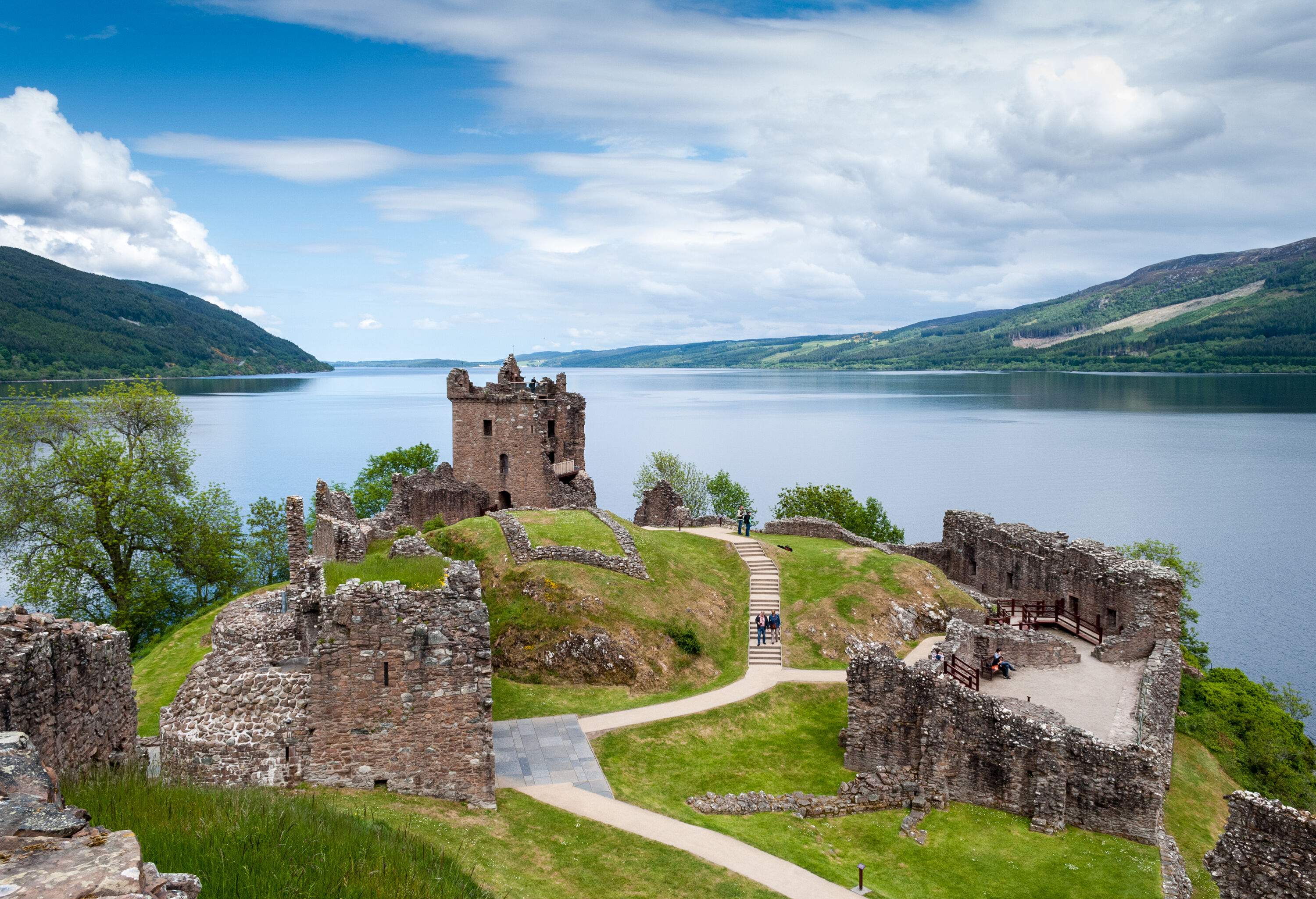
Distance from Fort Augustus: 36 miles – 1 hour
As you drive east along Loch Lomond to Inverness, visit the ruined 13th century Urquhart Castle at Drumnadrochit and discover 1000 years of Highland history set against the spectacular backdrop of Loch Ness.
Just a little further along the A82 is Clansman Harbour, where you can pick up a boat tour of Loch Ness, and do a bit of Loch Ness monster hunting – a fitting way to end your Scottish road trip!
Where to stay in Inverness: Kingsmills Hotel is well-located and has excellent reviews.
Conclusion
By the time you’ve completed your road trip around Scotland, you’ll have experienced mountains, coasts, lochs, and charming villages, along with some fantastic driving roads.
From the history of Scotland to the wilderness of Sutherland and the beaches of the west coast, you’ll be able to tick off some of Scotland’s top attractions from your bucket list.
So why wait? Start planning your Scottish road trip adventure today and discover the beauty that awaits you.
Disclaimer: The hotel recommendations included in this article are based on customer ratings and the author’s personal choices, so please feel free to use our hotel search tool to find the accommodation best suited to your needs.

